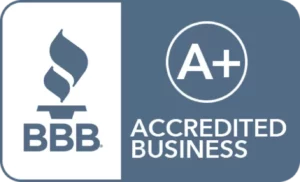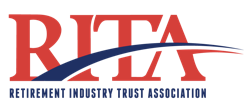What is a Self-Directed IRA LLC?
A Self-Directed IRA LLC (SDIRA) is a type of individual retirement account that allows retirement investors to use their IRA funds to make alternative asset investments. Self-Directed IRAs are similar to traditional IRAs, but they provide more investment options to IRA holders. By using this retirement structure, you can diversify your investment opportunities and invest outside of stocks, bonds, mutual funds, and other traditional assets. You can still make traditional asset investments, but if you’re more comfortable investing in assets like real estate and precious metals, the Self-Directed IRA LLC allows you to do so. Ultimately, this diversifies the assets inside of your retirement account.
This self-directed plan gives you more control over your retirement funds. However, it’s important to note that not all Self-Directed IRAs are the same. As a result, you will not find this term anywhere in the Internal Revenue Code.
With a Self-Directed IRA LLC, there are two investments you cannot make: life insurance and collectibles. Furthermore, you cannot make transactions under Internal Revenue Code (IRC) Section 4975(c). These are prohibited transactions that are broken down into categories: direct prohibited transactions and indirect prohibited transactions. Other than these three restrictions, you can make any type of investment with the Self-Directed IRA LLC.
The plan works for all types of individual retirement accounts:
- Traditional (pretax) IRA
- Roth IRA
- SEP IRA
- Simple IRA
In other words, you can self-direct any of these IRAs to make alternative asset investments.
Establish the Self-Directed IRA LLC with IRA Financial by signing into our app. With the app, you can also perform basic account maintenance.
Checkbook Control
Discover the advantages of establishing a Self-Directed IRA LLC with checkbook control.
- Invest in what you know and understand tax-free, such as real estate, tax liens, hard money loans, private businesses, cryptocurrencies, and much more
- Take control of your IRA assets and make investments from a local bank account
- Making an investment is as easy as writing a check or executing a wire transfer
- Save on custodian fees – no transaction or annual account balance fees
- Invest with limited liability protection
- Gain asset & creditor protection
Diversification
Most Americans have an enormous amount of financial exposure to the financial markets. Whether it is through retirement investments, such as IRAs or 401(k) plans, or personal savings, many of us have most of our savings connected to the stock market.
In fact, over 90% of retirement assets are invested in the financial markets. Investing in non-traditional assets, such as real estate, offers a form of investment diversification from the equity markets. With a more diversified Self-Directed IRA, it is less likely that your assets move in the same direction. However, diversification does not assure profit or protect against loss. Nevertheless, the use of non-traditional asset classes can help protect your portfolio when the market is down and prevent you from losing more than the market. Invest in What You Understand
Invest in What You Understand
Americans became frustrated with the equity markets after the 2008 financial crisis. Thankfully, we have seen the financial markets rebound since then. Yet, many investors are still somewhat shell-shocked from the market swings. They are not 100% sure what goes on in Wall Street and how it all works.
Real estate, for comparison, is often a more comfortable investment for the lower and middle classes because they grew up exposed to it. Whereas the upper class are more familiar with Wall Street and other securities.
We always hear people talk about the importance of owning a home, and the amount of money one can make by owning real estate. From Donald Trump to reality TV, real estate is fast becoming mainstream and a trusted asset class for Americans.
Of course, it’s not without risk, but many investors feel more comfortable buying and selling real estate than they do stocks. With a Self-Directed IRA LLC, you can make real estate and other alternative asset investments tax-deferred or tax-free with the Roth IRA. Inflation Protection
Inflation Protection
Rising food and energy prices, along with high federal debt levels and low interest rates have recently fueled new inflationary fears. As a result, some investors may look for ways to protect their portfolios from the ravages of inflation.
It is a matter of guesswork to estimate whether these inflation risks are real. For some retirement investors, protecting retirement assets from inflation is a big concern. Inflation can have a nasty impact on a retirement portfolio because it means a dollar today may not be worth a dollar tomorrow.
Inflation also increases the cost of things that are necessary for humans to live and enjoy life. Some examples are gas, shelter, clothing and medical services. It decreases the value of money so that goods and services cost more.
For example, if someone has an IRA worth $250,000 at a time of high inflation, that $250,000 will be worth significantly less or have significantly less buying power. This can mean the difference between retiring and working the rest of your life.
Many investors have long recognized that investing in commercial real estate can provide a natural protection against inflation. This is because rents tend to increase when prices do, acting as a hedge against inflation. Hard Assets
Hard Assets
Many non-traditional assets, such as real estate and precious metals are tangible hard assets that you can see and touch. With real estate, for example, you can drive by with your family, point out the window, and say “I own that”.
For some, that’s important psychologically especially in times of financial instability, inflation, or political or global upheaval. Tax Deferral
Tax Deferral
Tax deferral literally means that you put off paying tax. The most common types of tax-deferred investments include those in IRAs or Qualified Retirement Plans. Tax-deferral means that all income, gains, and earnings accumulate tax-free until the investor or IRA owner withdraws the funds and takes possession of them.
As long as the funds remain in the retirement account, the funds will grow tax-free. This allows your retirement funds to grow at a faster pace than if the funds were held personally. As a result, you can build for your retirement faster.
When you do withdraw your IRA funds in the form of a distribution after you retire, you will likely be in a lower tax bracket and be able to keep more of what you accumulated.
So, with using an traditional IRA retirement savings vehicle:
- You don’t pay taxes on the money you invested
- You may pay taxes at a lower rate when you finally do “take home” your money
If the funds remain in the account, they grow without taxes eroding their value. This enables assets to accumulate at a faster pace, giving you an edge when saving for the long term.
Pay Taxes Later
The concept of tax-deferral stems from the notion that all income and gains the pretax retirement account generates will flow back into the account tax-free. Instead of paying tax on the returns of a Self-Directed IRA investment, such as real estate, you pay tax at a later date so your investments grow unhindered.
For example, if an IRA investor invests $100,000 into a Self-Directed IRA LLC in 2023 and the account earns $10,000 in 2023, the investor doesn’t owe tax on that $10,000 in 2023. Instead, the Self-Directed IRA investor must pay taxes when he or she withdraws the money from the IRA. This may be many years later. Assuming the IRA investor is in a 33% federal income tax bracket, he or she will have to pay $3,333 in federal income taxes on the $10,000 earned on the IRA in 2023. That leaves $6,667 in the account. At a 8% annual return, those earnings go on to produce $533.36 in 2019.
However, because IRAs are tax-deferred, the Self-Directed IRA investor can earn a return on the full $10,000 rather than the $533.36 he or she must pay in taxes that year. At a 8% annual return, the investor would earn $800 in 2022. The beauty of tax deferral is that the deferral compounds each year.
The following example illustrates the powerful advantage of tax-deferred contributions and compounding through a Traditional IRA versus making contributions to a taxable account
Example:
Joe is 40 years old and makes a $5,000 contribution to an IRA. Joe is in a 30% federal income tax bracket. Joe invests his IRA funds and receives a 6% average annual return. When Joe retires at age 70, his $5,000 contribution would be worth $21,609.71. If Joe invested the $5,000 personally, the account would only be worth $14,033.97.
Did You Know?
When you choose to invest with a Self-Directed IRA, it’s critical to know the rules that govern them so you don’t violate the laws. There are so many investment options and ways to get your funds to work for you – real estate, cryptocurrency, traditional investments, alternative investments.











